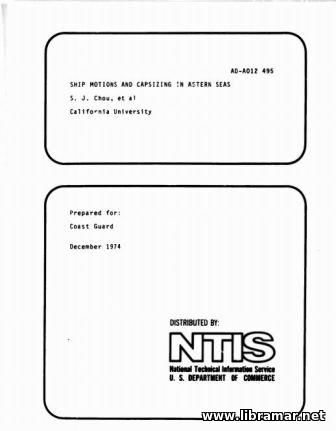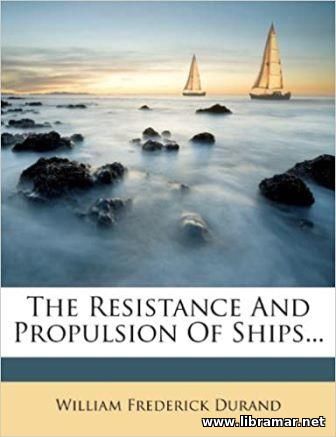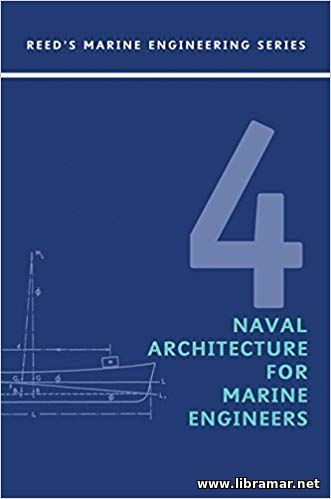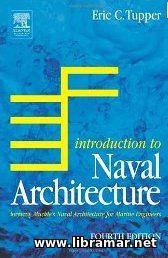 This is a good collection of the carefully selected works, provided by the recognized experts on the subject of the ship motions. It reflects the results of the efforts of analytical study and experimental research applied to the vessel motion in the rough seas. As a result of the study, the motion anomalies have been revealed upon conducting the model analysis, and these motions had never been notices earlier, based on the standard linearized theory.
There have been so many tests completed with the radio-controlled vessel models, and using the wide array of techniques. In addition to that, the document presents results of the comparisons conducted between the ship motions determined in the course of the experiments, and the predictions made based on the linear strip theory.
Long story short, the content of the present volume will be of practical interest and use to all those willing to study the ship motion in detail and with the emphasis made on the extreme seas and rough weather conditions. Make sure that you go through the pages of the document since it provides wealth of information that is very difficult to find somewhere else, and the live examples worked by the professional researchers.
 The author of this classical work developed it with the intention to give students a sort of compact yet informative treatise that would cover all the aspects of the ship hull resistance and propulsion and that would contain all necessary formulae, tables and other data for making correct estimates. His efforts eventually resulted in the present title that gained popularity among students of naval architecture.
There are six basic chapters in this volume, starting with the general information about the hull resistance, where the essentials are explained including but not limited to the eddy and skin resistance, Froude’s and Rankine’s methods, phenomena of waves, trochoidal waves, squat and shallow water effects etc. The second chapter deals with the propellers and provides all important definitions and formulae with proper and easily understandable explanations.
After that, the author proceeds with the analysis of the mutual reactions between ship’s hull and propeller, including the thrust deduction; later, the analysis of trials is given together with the average results. Two other chapters of the publication are devoted to the power of ships and design of the ship’s propellers.
 The main body of this classic publication is arranged in six chapters. The first chapter is dealing with the ship resistance itself, including the general ideas on that and stream lines with their geometry, one of the deeply immersed planes, skin-resistance, wave-making resistance, Froud’s experiments, increase of the ship’s hull resistance due to the shallow and/or rogue water, the influence that the shoals, banks, currents and slops have on the resistance, and other relevant items.
The second chapter is devoted to the ship propulsion, and here such important matters as propellers and their propulsive actions, hydraulic propulsion, screw turbines/propellers etc. , are covered in detail. The objective of the third chapter is to address reaction between the ship’s hull and the propeller, with due attention paid to the constitution of the wake, analysis of the power that would be required for the propulsion of particular ship, indicated thrust, mean pitch and mean slip, negative apparent ship etc.
The remaining three chapters tell readers about the design of the ship propeller, powering ships and, of course, trial ships. Although released more than a century back, the content of the book retails its relevance today.
 The author of this publication has successfully adopted a practical approach and has presented all recent researches and also different practical applications in the real-life design and operation of the submarines. The list of topics covered within this volume is including the hydrostatics and maneuvering of the submarines, and their resistance and propulsion problems.
The author has conducted a brief review of the fundamental technical concepts in ship hydrodynamics and then proceeded to the demonstration of how exactly subject concepts could be applied to the submarines, covering the use of the physical model experiments. He has also clearly explained all issues commonly associated with the maneuvering of the submarine in the vertical/horizontal planes allowing readers to discover the suggested stability criteria, together with the effectiveness of the rudder and also hydroplane.
The publication also is including a separate section covering the design of the hull appendages including all technical info relating to the sail design and arrangement of the bow planes plus alternative configurations of the stern part of the submarine. Among the other topics that have been addressed in this volume we would mention the hydro-acoustic performance, different resistance components and hull shape effect. The content reflects a great experience of the author in this field of submarine design.
 The ship disasters that occurred in the past all serve as reminders to the professionals of the maritime industry of the serious need for the cost effective enhancement of the safety and also as strong indicators of the gaps existing there in the stability safety of the vessels. The latter problem is actually very complex, and practically meaningful solutions to it can be feasible only in case of close international co-operation and combining the efforts made by all members of the maritime community.
A CRP, standing for the Collaborative Research Project, was launched some thirty years ago as a response to the above mentioned problem. The authors of the present publication have included selected and most valuable technical materials obtained from the first four CRP workshops. The book contains nearly fifty documents representing all currently available professional expertise related to the stability of the vessels, spanning seventeen different countries of the world.
All of the papers included in this volume have been arranged in four groups, dealing with the stability of the intact ship, stability of a damaged ship, covering the special problems of ship stability, and addressing the impact that stability has on design and operation of the vessels. Definitely must-have book for all those people who wish to be kept updated with all recent happenings in the field of contemporary naval architecture, and ship stability in particular.
 The present volume is making one of the parts of the famous Reed’s series of book. The intention of the author is to provide a comprehensive professional coverage of the theoretical knowledge related to the naval architecture the one particularly required by the marine engineers.
The arrangement of the material contained in the book is very helpful to the reader – the author starts with the very elementary information and then step by step goes deeper. Throughout the content of the publication, the main emphasis is placed onto the essential theoretical principles.
The text is supplemented by the numerous illustrations of a very informative character, and such approach makes understanding much easier. We may assure you that all engineers who work systematically with this book will eventually find the time spent on the learning amply fully and adequately repaid since they will have a good understanding of all principles of the naval architecture and be able to apply their knowledge when handling their day to day operations.
The book definitely deserves attention of all marine engineers since the author concentrates on the maters specifically chosen to suit their needs with no excessive information.
 A truly timeless textbook on naval architecture providing all interested people, and not necessarily professionals. with a required introduction to this interesting discipline - in fact, the way in which the material has been presented in this book makes it ideal even to the newcomers having limited knowledge of this subject.
Eric Tupper, the author of this brilliant and world popular title, made a remarkable attempt to make a book equally useful to all categories of readers, giving them a very clear yet quite concise introduction. We all understand that the basic characteristics of the design and the way they impact the behavior of the ship at sea are of critical importance to the people.
Of course, the practicing naval engineers must have a very deep and thorough understanding of all technical principles involves; however, the pro's supporting naval architects in design and production of the ships will also need some good grasp of the fundamentals.
Marine engineers should recognize the exact degree to which their everyday working activities are influenced and bounded by the basic principles of naval architecture. The present publication covers the basic of the naval architecture and will therefore present a great practical interest to students and specialists in the fields of ship construction and marine engineering.
 The content of this volume is mainly based on the results obtained in the course of the international Workshop which took place in Berlin and dedicated to creating of the shapes in both naval and civil architecture. The authors of the paper are presenting the very final version of the fourteen articles that have been presented at that time together with four relevant appendices.
Subject workshop was intentionally held to lay the certain basics in a comparative study of the history of technical knowledge in two above mentioned disciplines. We know that the naval architecture is treating the conception, design and subsequent realization for the maritime structures. The subject of creating shapes was considered a focal interest point for the comparisons carried out between two above mentioned disciplines due to the important role it plays in development of the objects.
The discussions and presentations that took place during that workshop and then included in this volume in the form of results are following such objectives as collection and documenting of the sources of shape creating-related knowledge, classification of the procedural and practical knowledge, enumeration of the important milestones, placing priorities related to the design and construction of the objects, relevant historical changes, comparison of different styles and methodologies of shape design, terminology, real life case studies etc.
|







